How to understand that the battery on an iPhone has broken. Working ways to test iPhone battery.
In one of our previous instructions, we talked about how to find out iPhone battery or iPad using special utility for computer. In the same guide, we will describe how to determine the degree of battery wear on mobile Apple devices without having to connect them to a PC.
Note: It should be noted that apps like Battery Life are often removed by editors. App Store from the app store for breaking the rules. So, the Battery Life application that we highlighted in the instructions only in January 2017 returned to the App Store after a long absence.
Step 1. Install free app Battery life from the App Store. There are in-app purchases available, however, no expenses are required to determine the level of battery wear (and track it in the future).
Note: alternatives are two apps of the same name - Battery Life: Your Battery Doctor and Battery Life - Your Battery Details.
Step 2. Run Battery life.
Step 3. Battery Life will show the level of wear on the battery on the start screen. For more information, select the menu item " Current data».
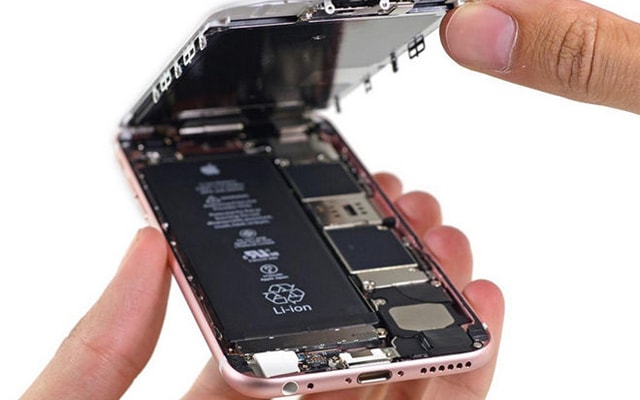 In such a simple way, you can determine the degree of battery wear on your iPhone or iPad without using a computer and installing specialized utilities. Note that Battery Life has the ability to view the battery life history. On the tab “ History»The last measurements and the dates of their carrying out are displayed.
In such a simple way, you can determine the degree of battery wear on your iPhone or iPad without using a computer and installing specialized utilities. Note that Battery Life has the ability to view the battery life history. On the tab “ History»The last measurements and the dates of their carrying out are displayed.
 See also.
See also.
iPhone and iPad are characterized by decent indicators of time autonomous work, but their batteries, alas, do not last forever. After a while, they lose their capacity, and subsequently require replacement. Operating system iOS continuously monitors the state of the standard battery, so owners of smartphones and tablets can always determine the degree of battery wear and when it needs to be replaced.
Any modern battery has a limited number of full discharge cycles. After that, they begin to lose the capacity declared by the manufacturer. A full cycle is the process of discharging the device from 100% to 0%. Battery iPhone loses up to 20% of its capacity after 500 such discharge cycles, the battery Apple Watch and iPad- after 1000 full charge cycles. Battery iPod provides up to 80% of original capacity after 400 complete cycles.
How to check the status iPhone battery and iPad
If your iPhone or iPad was purchased on the secondary market, then assessing the condition of the battery is quite problematic. For such cases, it will come in handy third party application. Useful program called Battery life... On the main screen, it shows the degree of battery wear and gives an estimate: Perfect(Great), Good(OK), Bad(bad) and Very bad(very bad). If in the main section go to the menu Raw Data, then in the line Cycles you can see the number of battery charging cycles.

You can also find out the degree of battery wear on iPhone and iPad using the desktop application iBackupbot... After launching the program, you need to connect the iOS device to the computer and select the gadget in the Devices section. On the right side of the window will appear Technical information... Here you need to press the "More Information" button, which will show the number of battery charge cycles - CycleCount .
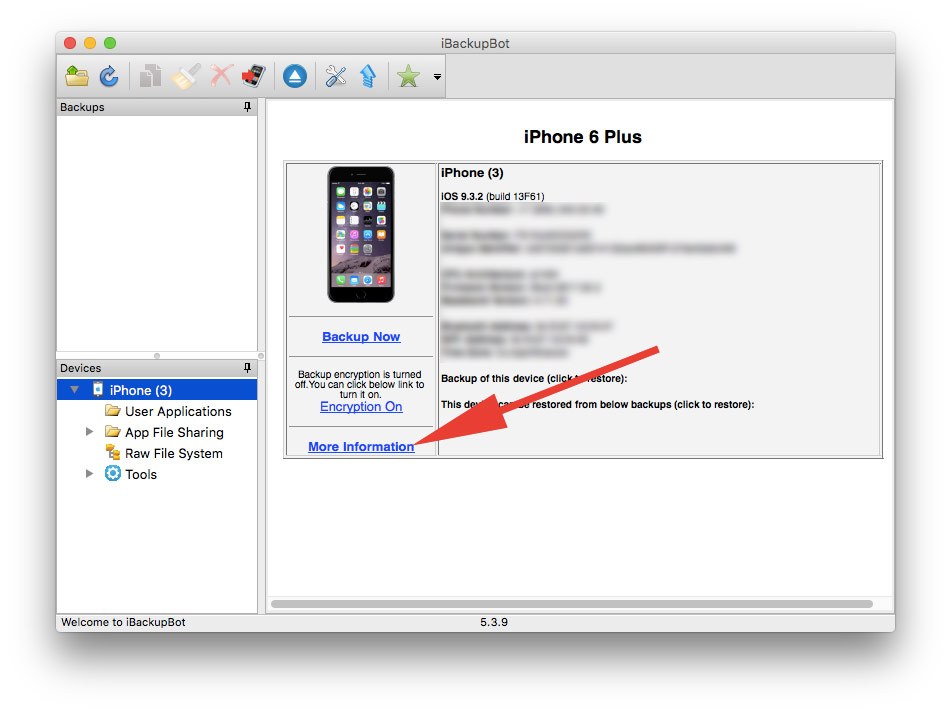

How to Extend iPhone and iPad Battery Life
In order to extend the life of the battery mobile device, you should try to keep the charge level at two-thirds, or rather, between 80% and 40%. It is not recommended to keep the device charged up to 100%, this will significantly reduce its service life. It is not necessary to charge new iPhone or iPad within 72 hours of use so that it “remembers” what it is like to be fully charged. It is a myth. This advice is true when working with nickel batteries, but in the case of the lithium-ion batteries that are used in the iPhone and iPad, it is completely untenable.

Charging the battery too often may cause minor damage. You should still do one complete discharge / charge cycle about once a month. Experts also advise to protect the device from extreme low / high temperatures. The recommended storage temperature is 15 ° C (59 ° F), and the maximum safe temperature typically ranges from 40 ° C to 50 ° C. At an average temperature of 25 ° C, a lithium-ion battery will lose 20% of its maximum capacity every year. At 40 ° C, its capacity will drop by 35% annually.
At a certain stage using iPhone, the user asks the question whether it is necessary to change the battery on the smartphone? And how do you know when you need to change the battery on the iPhone? One of the indicators of the "life" of an iPhone battery is the number of charge cycles.
The battery charge cycle is the rate at which your smartphone was charged and then discharged. Therefore, one cycle should be understood as 1 charge and 1 discharge of the battery.
With prolonged use of the smartphone, the battery gradually loses its energy storage properties and becomes unusable. As a rule, this becomes noticeable in the battery life of the smartphone. Typically, iPhone battery life is 500 charge cycles. After overcoming the threshold of 500 cycles, the battery holds its charge worse and you need to think about changing either the battery or.
How to find out the number of iPhone charging cycles?
There are no standard verification methods, but no jailbreak is needed. It will help you find out how many charging cycles have already been, the iBackupbot program. You can install it on MacOS and Windows. You can download the program at www.icopybot.com.
Important: iTunes must be installed on the computer. The program will not work without it.
After installing the program, connect your iPhone to your computer and launch iBackupbot. A window with information about your iPhone will immediately open in front of you.
Go to the "More information" section ( More information) A new window will open with detailed information... The first line in the "Battery" section, the "CycleCount" parameter, is the number of times your iPhone is charged.

Key indicators from the battery section in iBackupbot
- CycleCount is the number of cycles ( charging / discharging the battery);
- DesignCapacity- battery volume in mAh ( original battery capacity as declared by the manufacturer);
- FullChargeCapacity- full charge volume ( an indicator that shows how much the battery is when fully charged today);
- Status- status ( that is, the state of the battery is working / not working);
- BatteryCurrentCapacity- battery charge level at the moment.
From the example, you can see that the iPhone 5 battery has 708 charge cycles. Moreover, the volume of a full charge is less than 40% (500 mAh) of the declared volume (1430 mAh). If you have a figure of 70-60%, this also means that the battery on your iPhone needs to be changed.
If, when checking, you turned out to have few cycles, and the smartphone is discharged quickly, you should already contact the service for diagnostics and troubleshooting.
The iPhone battery is his heart, without it even the newest Apple smartphone- just a useless piece of metal and glass. In this article, we will tell you what kind of battery is installed in the iPhone, how to assess its condition and how to properly charge it.
In contact with
What type of batteries does iPhone have?
Each iPhone comes with lithium-ion battery... They have enough advantages over "traditional" batteries: they charge faster, work longer, and weigh less.

Battery recharging consists of two phases. During the first - from 0 to 80% - the battery is replenished with energy quickly (the exact charging time depends on whether the device is used, settings and other factors). The second - from 80 to 100% - is called compensation, it "weakens" the electric current and thereby allows you to extend the life of the iPhone battery.

What is a charge cycle and why is it important?
One cycle is when you discharge your iPhone from 100% to zero. This can be done in one go, or in several. Example: the battery is 75% discharged in a day. You charged it to 100% and continued to use it. One recharge cycle will end when you use up another 25% of the charge (yesterday's 75% + today's 25%).
What are we for? The iPhone battery naturally has a resource. After 500 full recharging cycles, the battery capacity of the "apple" smartphone will decrease by 15-20%. In practice, 500 charging cycles is 1.5-2 years of smartphone operation. After about 3-4 years, the battery capacity will correspondingly decrease by 50% from the value that the iPhone had out of the box. Then it makes sense to think about replacing the battery - after all, you will probably notice that your iPhone, for example, no longer "survives" until the evening and lets you down at the right time.
How to find out the number of iPhone recharge cycles passed directly on the iOS device?
Download for iPhone free program Battery Life. Open it and go to the tab Battery where the value Cycles and will indicate the number of recharge cycles the iPhone has gone through.
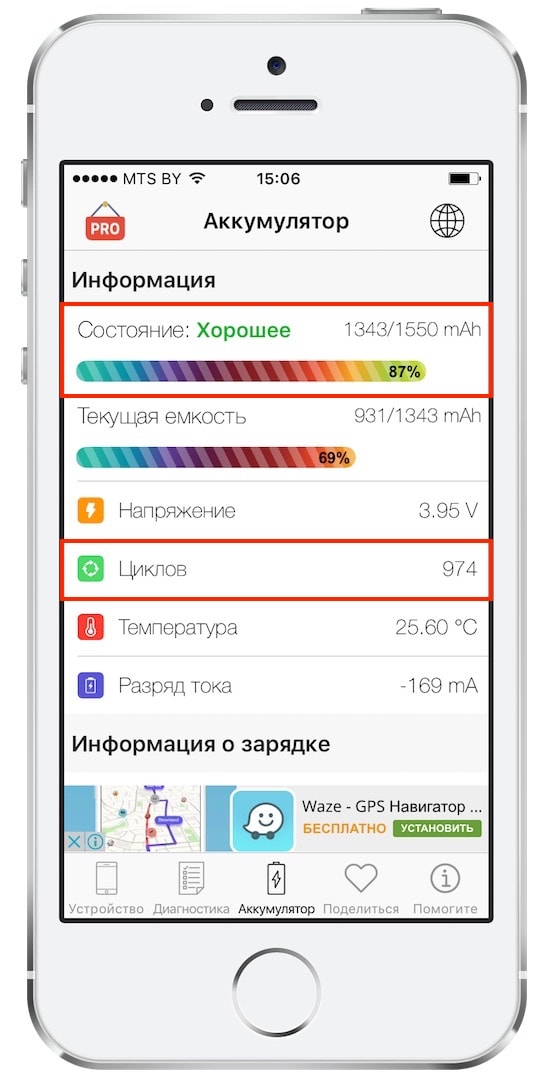
Sorry, the section Cycles in the application Battery life available only users of devices with iOS 7, iOS 8 and iOS 9. Users of iOS 10 and newer can get battery data as a percentage with an indication of the general characteristic:
Ideal- the battery of the new iPhone.
Good- slight loss of capacity.
Fine- the battery has lost the allowable amount of capacity.
Bad- significant loss of capacity.
Terrible- it's time to think about replacing the battery.
Almost died- the battery needs to be changed urgently!

How to know the number of iPhone recharge cycles completed on Mac or Windows?
Use the program. After installation, connect your iPhone, select it under Devices, click on the inscription More Information and look at the number opposite the inscription CycleCount- this is the number of recharge cycles already passed.
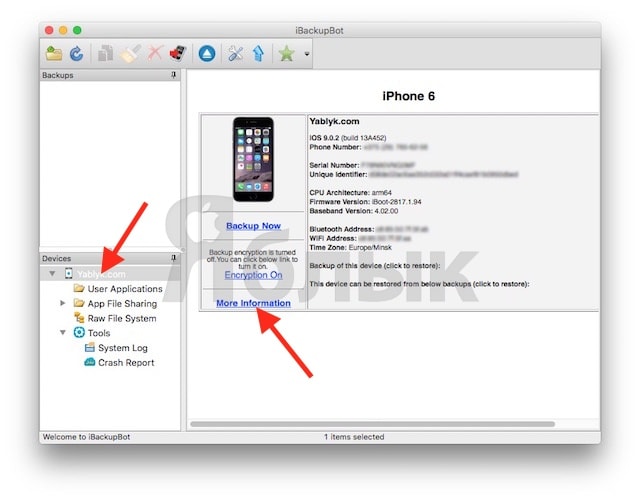
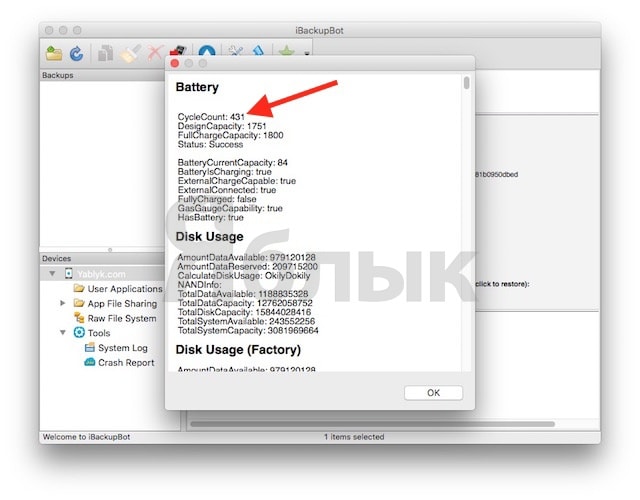
Below you will also find another useful information about the battery of your iPhone - the capacity according to the passport ( DesignCapacity), the actual capacity after full charge ( FullChargeCapacity), battery wear level ( BatteryCurrentCapacity).
Users of mobile devices are putting forward ever higher requirements for the autonomy of their devices, for the resource and durability of the battery. Every year these requests are growing, and the capabilities of most gadgets remain the same due to the constant reduction in the weight and size of the device for the sake of design beauty.
Of course, the iPhone has traditionally been famous for its solid battery life. But they also cannot boast of an eternal battery life. After some time, they begin to lose capacity, so there is a need for replacement. Hence, it is sometimes so important to know how to check the wear level of an iPhone battery - especially when buying a used gadget.
It should be noted that after 500 discharge-charge cycles, the iPhone battery loses up to 20% of its capacity. A reasonable question arises, how to find out the level of wear on the iPhone battery - we will consider the most accurate and efficient hardware and software.
For some, this advice may seem banal, but you need to initially determine whether the device discharges itself or you do it. It is enough just not to use the device actively for some time, but to check the charge level. The best option is to fully charge the gadget and leave it overnight. Turn off notifications so they don't add extra discharge.
And in the morning we look at the current charge level. If it remains the same or has lost a few percent, the battery is in good condition. But a loss of 10% overnight indicates a certain problem.
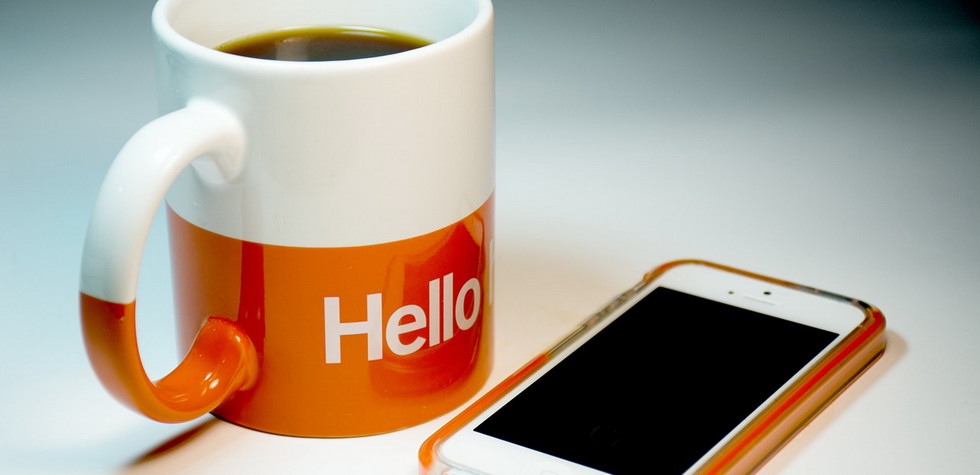
In the morning we look at the current charge level
How to check battery on iPhone 5 programmatically
If you buy a gadget on the secondary market, it is important to immediately understand - how to check the battery on an iPhone? Let's say right away that such a task when working with used devices is quite problematic. Some hardware is possible, but too complex and not always accurate.
Therefore, the iPhone battery test application will be a great help. Among the most accurate and popular solutions, we note the Battery Life program - on the main screen it displays data on current wear and makes an assessment of the state of the battery. Here you can also clarify the approximate data on the number of battery charging cycles that have already been carried out.
How to check battery health on iPhone - let's talk about desktop apps
An informative method can also be a desktop program for testing the battery on an iPhone installed on a computer. The iBackupbot application is especially popular. In this case, to check, install and run the application, then connect the iPhone to the computer. Select a specific gadget to check in the Devices section - will appear on the right technical details about the device. Next, click "More Information" to determine the CycleCount data (the number of charge cycles performed).
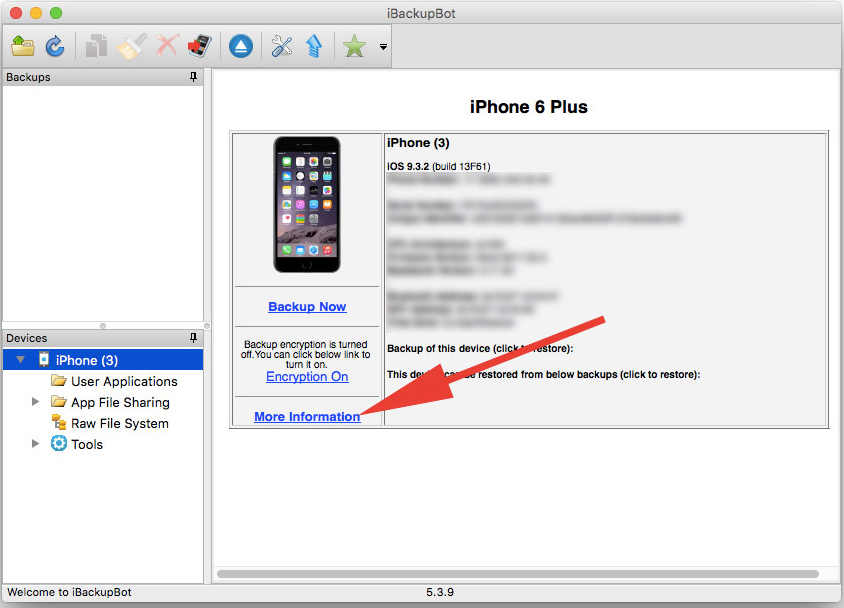
Click "More Information"
How to Extend iPhone and iPad Battery Life
We've covered the main ways to check the battery on iPhone 5s and other models. But another question is also reasonable - how to take care of the state of the device, to maximize the battery life?
To extend the life of the battery, it is optimal to maintain a 2/3 charge, between about 40–80%. It is better not to keep the device 100% charged, as this will lead to a decrease in the overall life of the device.
A new iPhone does not need to be charged for 72 hours before use - a common myth, but not suitable for us. It is relevant for nickel batteries, but does not matter at all for lithium-ion batteries.
Let's not forget about the dangers of charging the battery too often, which can deplete the battery life. However, a full discharge / charge cycle is recommended at least once a month. It is important to protect the battery from the effects of extreme low or high temperatures.

Try not to use your phone in low temperatures
And if you still need a replacement?
If during operation the battery has lost its capacity by 20-25%, the problem should not be considered critical - you can continue to work calmly. But with more serious losses, with frequent discharge, you have to think about replacing. The best option for this is to contact official or at least reliable services with a well-known brand. If you are replacing yourself, avoid buying suspiciously cheap batteries. Replacement requires complete disassembly, appropriate knowledge and experience are required, therefore, for the safety of the device, it is better to use the qualified help of specialists.
In this article, we covered how to check the battery on iPhone 6 and earlier. We hope that this information will allow you to accurately assess the current state of the gadget, avoiding unnecessary expenses. If the problem of frequent battery discharge is not caused by its poor condition, try to optimize the gadget by abandoning various energy-intensive applications.
 Differences Between GPT and MBR Partition Structures
Differences Between GPT and MBR Partition Structures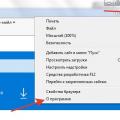 Wipe Internet Explorer cleanly
Wipe Internet Explorer cleanly Windows updates are downloaded but not installed
Windows updates are downloaded but not installed